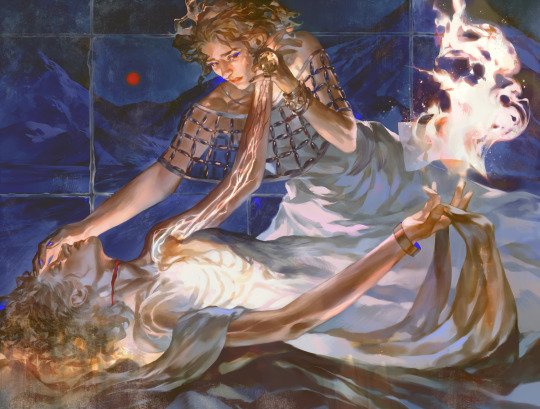Aspiring author, Nigerian Canadian, she/her pronouns. Current WIPs: Of Tears and Ashes / Of Blood And Gold from the Happily Ever After Series
Don't wanna be here? Send us removal request.
Text
You see it's quite simple: if they call the earth Gaia, it's fantasy. If they call it Terra, that's sci-fi
52K notes
·
View notes
Text

I just really appreciated this and wanted to share
16K notes
·
View notes
Text
I hate I when I get an idea for a novel. Like oh no here starts the slow sad slip n’ slide to dissapointment again.
24K notes
·
View notes
Text
Drawing fat characters will make you a better artist, btw. Unironically, once you know how, you will not want to go back
19K notes
·
View notes
Text
funny to think that when i was a kid i was all "i REFUSE to ever work an office job, i am a wild creature, my spirit is free and tempestuous and cannot be contained within cubicle walls" and now at the age of [REDACTED] i'm like please. please give me an office job. please give me a sensible office job where all i have to do is get up at the same time each day and clock in and send emails and clock out again. i am on my knees begging.
330 notes
·
View notes
Text
"redemption arcs are toxic, you shouldn't try to fix someone!"
actually it is so important to me that being in community and experiencing human connection can save people. thanks
135K notes
·
View notes
Text
Btw when people say "if you want to be a writer you need to read a lot of books" that means bad books too. This applies to all creative mediums and also even if you don't want to make it you should immerse yourself in some mediocre slop here and there and even abysmal dogshit on occasion. As a fan of the medium. If all you eat is perfect A5 wagyu prepared by a Michelen star chef youre gonna end up thinking a well cooked and seasoned grocery store ribeye is basically dog food and this is the path to spiritual rot
1K notes
·
View notes
Text
Good trope: Character yelling, "It's not what it looks like!" while doing exactly what it looks like.
Great trope: Character yelling, "It's not what it looks like!" while doing something so unfathomable that the person who interrupted them can't even begin to attempt to figure out what the hell it is they're seeing.
39K notes
·
View notes
Text
Tips from a Beta Reading Writer
This one's for the scenes with multiple characters, and you're not sure how to keep everyone involved.
Writing group scenes is chaos. Someone’s talking, someone’s interrupting, someone’s zoning out thinking about breadsticks. And if you’re not careful, half your cast fades into the background like NPCs in a video game. I used to struggle with this so much—my characters would just exist in the scene without actually affecting it. But here’s what I've learned and have started implementing:
✨ Give everyone a job in the scene ✨
Not their literal job—like, not everyone needs to be solving a crime or casting spells. I mean: Why are they in this moment? What’s their role in the conversation?
My favourite examples are:
The Driver: Moves the convo forward. They have an agenda, they’re pushing the action.
The Instigator: Pokes the bear. Asks the messy questions. Stirring the pot like a chef on a mission.
The Voice of Reason: "Guys, maybe we don’t commit arson today?"
The Distracted One: Completely in their own world. Tuning out, doodling on a napkin, thinking about their ex.
The Observer: Not saying much, but noticing everything. (Quiet characters still have presence!)
The Wild Card: Who knows what they’ll do? Certainly not them. Probably about to make things worse.
If a character has no function, they’ll disappear. Give them something—even if it’s just a side comment, a reaction, or stealing fries off someone’s plate. Keep them interesting, and your readers will stay interested too.
5K notes
·
View notes
Text

I Will Be Sure When I No Longer Remember Myself
Personal piece <3
11K notes
·
View notes
Text
You ever get so excited you start fangirling over your own ideas that you haven't even written yet?
3K notes
·
View notes
Text
*About to write a chapter*
"Hold up—"
*opens notes to see their personalities.*
2K notes
·
View notes
Text
Slow burn but it's written by an impatient person
161K notes
·
View notes
Text
Hyperfixating on your own original work is the worst. Why tf can't I find fanart of my unpublished book on tumblr?? Worst fandom ever smh.
2K notes
·
View notes
Text
You need to draw and make art or else all the images will stay in your head and you'll get sick
178K notes
·
View notes

